King Pedro IV of Portugal
Pedro IV was King of Portugal for just two months, in the early 19th Century, but played a part in securing the throne for his successor. He was also the first Emperor of Brazil. 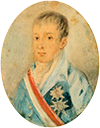
He was born on Oct. 12, 1798, at Queluz Palace in Lisbon. His mother was Carlota of Spain, and his father was the eventual King John VI, who at that time was regent for the reigning monarch, Maria I. Pedro was his parents' secondborn son and became the heir to the throne when his older brother, Francisco, died in 1801. Pedro went with the rest of the royal family to Brazil in 1807, when French and Spanish troops invaded and occupied Portugal. In Brazil, Portugal's largest colony, Pedro did his learning, studying geography, history, mathematics, and politics. A prodigious student, he spoke English, French, Latin, and Portuguese fluently and could understand German. He continued his joy of learning into his adulthood, spendings hours each day in reading and study. In 1817, Pedro married Archduchess Maria Leopoldina of Austria, whose father was Austria's Emperor Franz I. The couple had seven children, five of whom survived into adulthood: Maria (1819), Januária (1822), Paula (1823), Francisca (1824), and Pedro (1825). 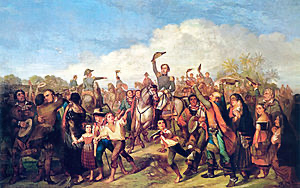
Pedro stayed in Brazil when John VI returned to Portugal to put down a revolt, in 1820. Pedro initiated a revolt of his own two years later, as Brazil declared its independence on Sep. 7, 1822. The new government proclaimed Pedro as its first emperor. Now known as the Liberator, he oversaw a three-year war to keep that independence, and John and Portugal officially recognized Brazil's independence in 1825. 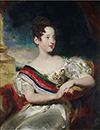
John died the following year, and a succession crisis ensued. Pedro was John's oldest living son and was technically the heir to the Portuguese throne. However, John had appointed his granddaughter Maria, Pedro's daughter, to succeed him. Lurking as well in the succession mix was John's second-oldest son, Miguel, who had led more than one uprising against his father and had gotten himself exiled to Austria. The people of Portugal made it clear that they did not want a monarch again ruling over both Brazil and Portugal and so Pedro agreed to take the throne but then give it up. John VI died on March 10, 1826, and Pedro became King of Portugal on that day. He abdicated on May 2 of that same year, and his sister became Queen Maria II. John's grand plan had Maria and Miguel eventually marrying and ruling together. In his brief time on the throne, Pedro presided over the introduction of the Carta, a new governmental blueprint, supplanting the Constitution of 1822. The Carta called for a two-house Parliament: an upper chamber in the style of the United Kingdom's House of Lords and a lower house of representatives, the membership of which was split between being elected by the people and being appointed by the king. Pedro's wife, Leopoldina, died later that year, of complications from a miscarriage. Pedro married again three years later; his second wife was Princess Amélie of Leuchtenberg. They had a daughter, Maria Amélia, who died of tuberculosis when she was 21, on the eve of her wedding. 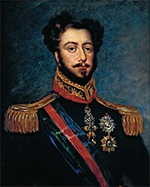
A political crisis consumed the Brazilian government in 1831. In April, Pedro's ministers resigned. The country was in an economic crisis as well, and Pedro, feeling overwhelmed, resigned his post as well, abdicating in favor of his son, Pedro, who was 6. The former emperor then fled with his wife to Europe. Maria was 7 when she became Queen of Portugal. Officially, her uncle Miguel had been appointed her regent. While Maria was in Vienna to pursue an education, Miguel seized the throne, declaring himself king on June 23, 1828. Maria ended up with France, where she was reunited with her father and stayed with the French king, Louis Philippe. 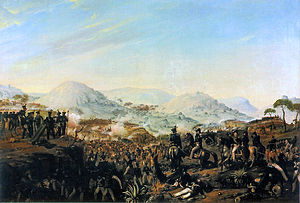
Pedro marshaled support (including one of France's national heroes and a strong friend of the cause of American independence, the Marquis de Lafayette) for Maria's return to the throne and led an army in an invasion of Portugal in July 1832. Pedro's troops, supported by troops from the U.K., landed in Porto and took the city unopposed. Miguel's troops took up siege positions around the city's perimeter. After a year of stalemate, Pedro authorized a risky mission to to the Algarve; it was successful, and his forces drove onward, taking Lisbon on July 24, 1833. At this point, a struggle in Spain spilled over the border. Isabella II who was defending her throne in the first of three Carlist Wars against her uncle, Don Carlos, who was also Pedro's uncle. The erstwhile Brazilian emperor threw in his lot with his cousin, not his uncle, and thereby gained an ally in the Spanish forces loyal to Isabella II. The result was a victory for Isabella and Maria. Miguel abdicated on May 26, 1834, and Maria retook the throne. Her older brother and champion, Pedro had enjoyed good health for most of his life; he suffered greatly during the war, however, and died on September 24 of that year, of tuberculosis. He was 35.
|
|
Social Studies for Kids
copyright 2002–2025
David White




